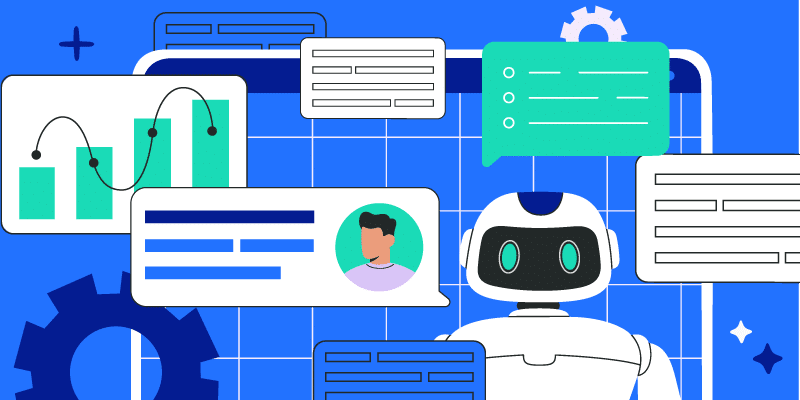What It’s Like to Scale a Startup, Get Laid Off, and Then Re-Hired During COVID-19
May 1, 2020
5 minute read

Editor’s note: To protect the author’s privacy, we’re publishing this post anonymously. All other details remain unchanged.
This is my candid story about working in IT at a fast-growing startup.
It’s about the challenges of scaling (and how BetterCloud helped set us up for success). But it’s also a tale of personal growth, self-reflection, ironic twists, and unexpected turns.
Wrangling SaaS at a fast-growing startup: like “the Wild West”
When I first joined my organization, we were a young startup using roughly 150 different SaaS apps.
We had no real inkling of who owned them or what they were used for. Some apps were redundant but we were primarily focused on growth, so no one had the time to really ask questions of “who/what/why?”
I started the same week IT started at the org, and part of my job was to wrangle these apps so IT was the primary owner. With our explosive growth, it was hard to find time to focus on specific projects. I like to refer to these times as the Wild West. Our IT director brought in BetterCloud because he had used it at a previous org and thought this could be a convenient way for us to begin to manage our infrastructure.
Scaling with BetterCloud: building complex automations and onboarding hundreds of employees in one year
At the core of our org we had four main systems: An HRIS for our employee database; an IdP for identity management; G Suite for email, Drive, and other services; and Slack for internal communications. BetterCloud easily fit the mold and helped us manage our core infrastructure from one convenient spot.
Seeing that we were a hot new startup and had 50+ employees starting each week, we turned our attention to the onboarding process. We started with a rudimentary onboarding workflow that simply notified a private Slack channel when a new user was added to our IdP.
Soon, this simple workflow opened the floodgates to more complex automations.
Since we were a Google heavy shop, we were able to harness BetterCloud’s tight connections between both platforms. Teams within our org became more defined, and were able to build more complex automations like delegating inboxes, forwarding email, and putting people in the correct organizational unit (OU).
In one year alone, the company onboarded hundreds of employees, which is unheard of.
Perfecting our offboarding workflow
Hiring eventually slowed down though, and the company became laser-focused on profitability. With a stacked IT and security team, this gave us some time to clean up tech debt from our initial growth.
During that time, we were fortunate enough to acquire two separate companies who had a similar tech stack to us. We were able to also integrate their core SaaS systems into BetterCloud. The new acquisitions were seamlessly added to our offboarding workflow, which helped with the fluctuation of employees.
This is where BetterCloud really shined. With our hunt to clean up licensing and stale accounts for the sake of being profitable, we found it best to use BetterCloud and integrate apps we began to take over. If a new app was integrated, it was added to our offboarding workflow. At our peak we had roughly 15 instances of different apps integrated.
Our offboarding workflow worked like this:
- HR asks us to offboard user
- User is deactivated in the IdP
- BetterCloud notices the status change in the IdP and kicks off the workflow
- User is suspended in Google, moved to a new OU, Drive documents are transferred, and user is finally archived. (This was an awesome feature Google added, and BetterCloud integrated it right away). This Google portion was the most complex part of the workflow
- User is deprovisioned in Slack, Asana, Zoom, GitHub, Zendesk, Dialpad, etc.
- Lastly, it DMed specific users in Slack to notify them of the offboarding. It also allowed those service owners to deprovision accounts that were not integrated in BetterCloud (this was super cool)
I was most proud of our offboarding workflow. This took a lot of time to build, and it was something I tested thoroughly and felt was ironclad. I was able to confidently show our management and security team that when an employee was offboarded, they truly no longer had access to corporate data.
Then… COVID-19 hit
Then the unfortunate events of the COVID-19 pandemic hit. In the following weeks, there was an immediate push to add even more integrations. Since we had all become remote employees, we relied on our cloud apps more than ever. BetterCloud set us up for success with our many integrations and rock solid onboarding and offboarding workflows.
In the following weeks, the company made the tough decision to lay off a large chunk of employees to save the business while no revenue was coming in. I unfortunately was one of many affected by the layoffs.
On this fateful day, I was notified along with many other colleagues that our services would no longer be needed at the organization. The company quickly cut access for affected employees, and I soon found myself without a job.
I went through many different stages of grief as one would. It took me a few days to collect myself and my thoughts. After a few days of reflection, I felt it best to think positively of the work I had done and keep my chin up.
The irony of it all was that my offboarding workflow—the one I had spent tirelessly perfecting— would be the very thing that offboarded me.
My hours of work creating alerts. Integrating apps. Testing and tweaking. All of it inevitably prevented me, a now ex-employee, from accessing the company’s data.
But surprisingly, I felt a sense of pride and accomplishment for what I had done.
A good time to reflect on my SaaSOps accomplishments & skills
After that happened, I found myself back in the job pool along with many others. Instead of perfecting workflows, I found myself perfecting my resume. This was a good time for me to reflect upon what I accomplished.
Back at [BetterCloud’s annual IT conference] Altitude 2019, a key takeaway for me was the rise of #SaaSOps. Right now, organizations are looking for people who have experience in this upcoming field. As they attempt to wrangle countless amounts of cloud apps, they want people who know how to manage and secure SaaS.
I can now proudly say I have a wealth of experience in this field.
The twist that nobody saw coming
But a few weeks later, my phone rang. I looked at the screen… and the caller was someone completely unexpected.
My now ex-boss’s number was on the screen.
I didn’t have time to process what he could possibly want. Stuttering, I answered the phone.
“H-Hello?” I said.
The conversation was awkward at first, to say the least. Neither of us knew how to approach the situation. But there was no ill will on either side, and I think we were both excited to chat and catch up. After a minute or two of general conversation, he asked, “Would you be open to coming back?”
Without hesitation, I said yes. I had already been talking to a few other companies, but I knew I’d be foolish not to consider the opportunity. During what I like to call the “Covid Economy,” it’s hard to be picky.
Regardless, I had unfinished business. I helped build the IT framework, and I felt there was a lot more to accomplish.
The past few weeks have been an emotional rollercoaster, but I do understand the tough position the company has been in during this time. I still believe in their cause and want to play an integral role in their success.
Looking to the future: IT must proactively prepare
It truly is a testament to how vital IT professionals are in any organization.
COVID-19 brought to light that remote employees and SaaS are going to play a major role in any organization, and IT professionals must prepare themselves with the right tools and skills.
Cloud apps provide the services, but BetterCloud provides the framework to make our work more manageable.
Having one centralized spot like BetterCloud to manage our work enables us to proactively prepare ourselves for any situation. For any organization wanting to grow, ensuring corporate data is secure (both during employment and post-employment) will become a main focus.
COVID-19 accelerated the move to the cloud for many organizations, and SaaS will only increase in adoption from here. It’s up to the IT professional managing the corporate cloud infrastructure to provide a definitive plan that’s flexible and secure for any unforeseen events. For long-term success, that means automating file security, on/offboarding processes, and more, so that you’re better prepared for whatever may come.






